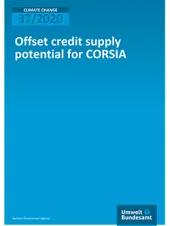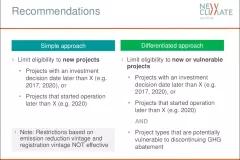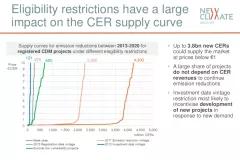This discussion paper assesses options for improving the current Emissions Unit Eligibility Criteria (EUCs) used for the Carbon Offsetting and Reduction Scheme for International Aviation (CORSIA) adopted by the International Civil Aviation Organization (ICAO), with the goal of ensuring the scheme’s environmental integrity. Clearly articulated EUCs are needed to define minimum standards for the “quality” of carbon offset credits that may be used under CORSIA. For this analysis, we focus on five EUCs that are essential for offset credit quality: additionality; baselines; permanence; avoidance of double counting; and causing no net harm. To evaluate the current EUCs, we review current practice among major carbon offset programs, and identify areas where the EUCs could be revised or elaborated to better align with best practices. We then provide specific recommendations for revision, refinement, or elaboration to improve each EUC, including suggested text edits and additions.
The work on this paper was led by the Stockholm Environment Institute and Öko-Institut e.V. with contributions from NewClimate Institute.
Conclusions and recommendations:
Our analysis finds that the current EUCs are mostly sufficient in covering basic conceptual elements related to each of the “carbon offset credit integrity assessment criteria” adopted by ICAO. However, all of the EUCs we reviewed could benefit from more elaboration on essential program requirements and procedures needed to ensure that the criteria are realized. High priority items include:
- For additionality, explicitly requiring that programs exclude from eligibility project types that have a high risk of being non-additional because they are legally required and/or frequently profitable without carbon offset revenues.
- For baseline determination, including a requirement that baselines be determined in accordance with fully vetted, program-approved methodologies; stipulating that any standardized baselines must be developed following program-established criteria for standardized approaches and apply benchmarks, stringency levels, and other parameters that are conservative and appropriately tailored to sector- and geographic- specific circumstances; and explicitly prescribing the use of appropriate crediting periods.
- For permanence, noting that programs must administer monitoring, mitigation, and compensation mechanisms; explicitly referring to buffer reserves and temporary crediting as viable alternatives for ensuring permanence; defining an ambitious (e.g., 100-year) threshold for permanence; and – if buffer reserves are used – stipulating essential requirements for buffer reserve approaches to effectively address non-permanence risks, including holding project owners liable for intentional reversals.
- For avoidance of double counting, specifying the procedures or requirements needed to avoid double issuance, double use, and double claiming – making reference to best practices among current programs; and explicitly expanding the scope of double claiming to include other potential competing claims to credited emission reductions or removals (not just host country claims).
- For no net harm, requiring programs to establish a list of social and environmental safeguards that must be adhered to by all projects; specifying the necessary procedural elements of program’s safeguarding systems; and removing the word “net” from the text of the EUC.
In most cases, the formal wording and terminology used in the EUCs could also be improved.







